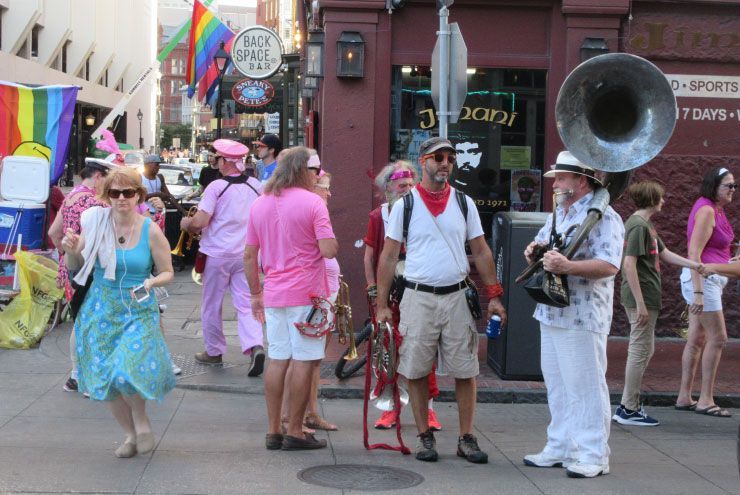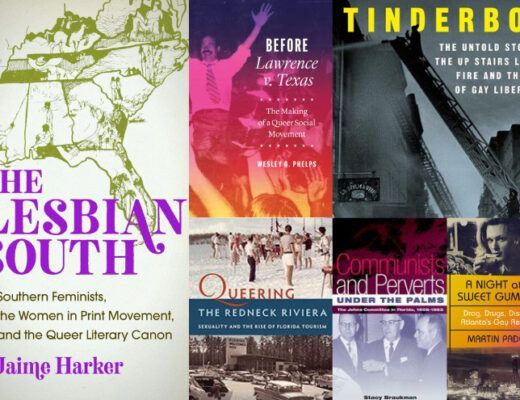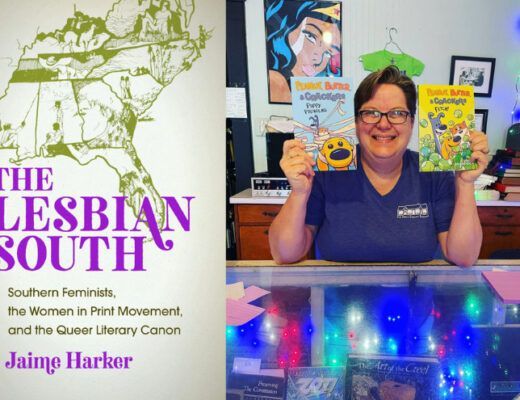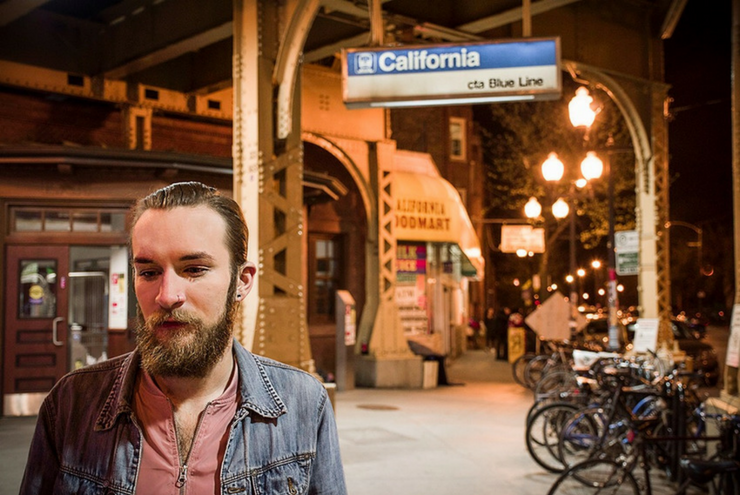By Dr. Laura McGuire
Welcome to the second installment of Traveling While Queer! Join me as I journey across the country to discover our shared queer history and sightsee in some of my favorite cities. Along the way, we will explore hidden havens, places of LGBTQ significance, and help you plan your dream va-gay-tion. Next stop, NOLA!
Why I Love NOLA
I’ll admit I’m a bit biased—I love New Orleans. I first visited The Big Easy in 2007, right after Hurricane Katrina wreaked its havoc. While I mourn the fact that I never got to see this vibrant city before that flooding and devastation, I am so grateful to experience its unparalleled culture now.
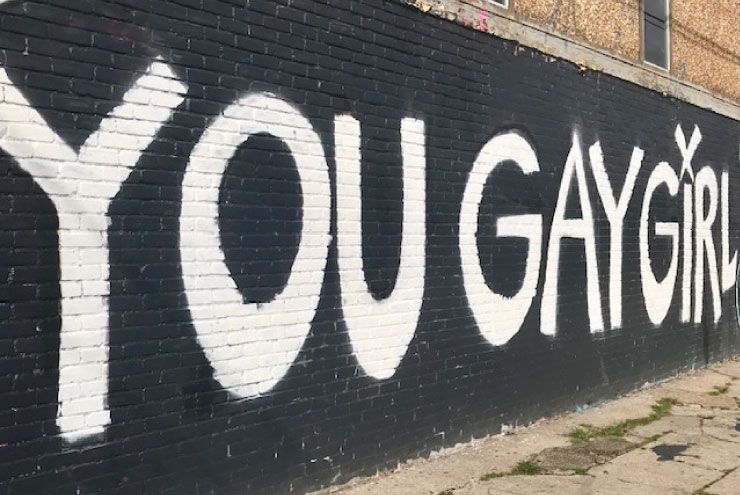
New Orleans, Louisiana has long been a safe haven for artists, LGBTQ folks, and others who exist outside of society’s conventional norms. Photo by Dr. Laura McGuire.
You may be surprised to know that, every time I have traveled to New Orleans, it has been for a social justice-related conference. Although the city hardly gets enough credit for it, New Orleans has a long history of including and supporting visionaries and outsiders, a legacy I feel deep in my bones every time I visit.
But NOLA is more than just Mardi Gras and Bourbon Street—beyond the tourist go-tos (which still never get old in my book) is a rich, diverse, and ever-changing southern gem of city. Let’s explore it some more.
LGBTQ History
New Orleans, Louisiana has long been a safe haven for artists, LGBTQ folks, and others who exist outside of society’s conventional norms. Since the 1930s, gay bars such as Café Lafitte in Exile (the oldest continuously operating gay bar in the United States) have welcomed the city’s LGBTQ inhabitants. While LGBTQ folks in cities across the nation began rioting in the 1960s and 1970s, NOLA queers were facing their own fights. In 1967, gay New Orleans native Clay Saw was arrested (and found not guilty) of conspiring to murder President John F. Kennedy, as the District Attorney himself put it, as part of a “homosexual thrill killing.” And in the summer of 1973, the arson attack on gay bar The UpStairs Lounge left 32 patrons dead.
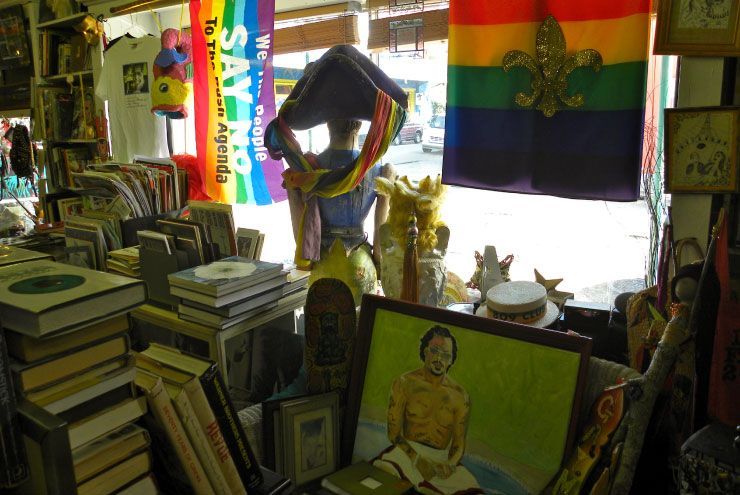
Owned and operated by Otis Fennell, Faubourg Marigny Art and Books is one of the oldest remaining LGBTQ bookstores in the country. Photo by Jason Paris.
But in the late 1970s, NOLA rose from the ashes and assumed its rightful place as a queer-inclusive city. In 1977, queer bookstore Faubourg Marigny Art and Books opened its doors amidst the chaos of New Orleans’ Frenchmen Street. Owned and operated by Otis Fennell, Faubourg Marigny Art and Books is one of the oldest remaining LGBTQ bookstores in the country and offers a delightful selection of queer literature, old porn magazines, and campy art. The wave of equality continued in the city during the 1990s. New Orleans City Council passed a gay non-discrimination ordinance in 1991; Louisiana became the first state in the Deep South to pass hate crime laws that covered sexual orientation in 1997 (the same year that NOLA Mayor Marc H. Morial extended domestic partner benefits to city employees); and, in 1998, New Orleans became one of the earliest cities to add gender identity to its list of groups protected from discrimination. Today, as you stroll through the French Quarter or down Frenchman Street, it’s hard to miss the rows of rainbow flags signaling the city’s Pride. Speaking of which—don’t miss NOLA Pride, which takes place during the second week of June each year!
Must-Sees
You haven’t truly experienced New Orleans unless you’ve visited the French Quarter. Check out Bourbon Street and Jackson Square to see what all that tourist buzz is about. Grab a seat at Café Du Monde for beignets (often known as Creole doughnuts) and a cup of chicory coffee while you listen to the talented street musicians play nearby. For lunch, mosey on over to the Gumbo Shop to get your fill of po-boys and gumbo goodness before taking the trolley to the Garden District to admire some historic New Orleans homes.
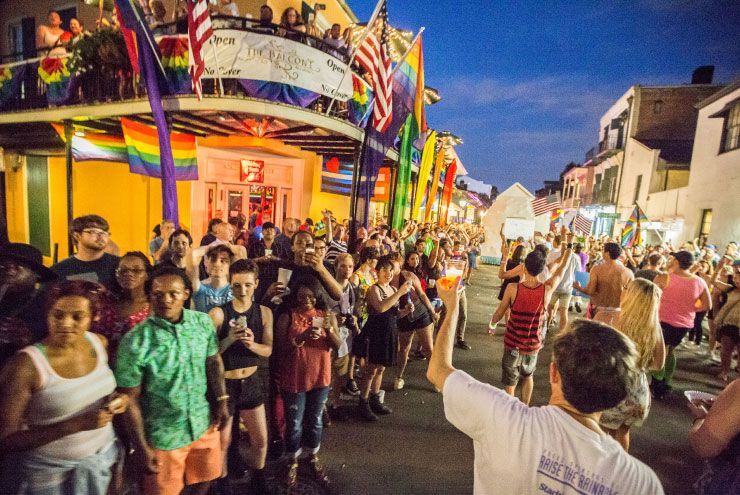
Don’t miss NOLA Pride, which takes place during the second week of June each year! Photo by Tony Webster.
Back in the French Quarter, Arnaud’s presents the perfect pick for a fine dining dinner experience. The restaurant recently celebrated 100 years in business and serves the finest of Creole favorites, from fresh oysters rockefeller, to shrimp creole, to frog legs provençale. Of course, this is New Orleans, the Sin City of the South, so make sure to finish your evening by wetting your whistle at one of the city’s amazing LGBTQ bars. We recommend Café La Fitte in Exile, Corner Pocket, and—for those female-identified folks—check out Grrl Spot, a once-a-month pop-up queer and lesbian bar.


